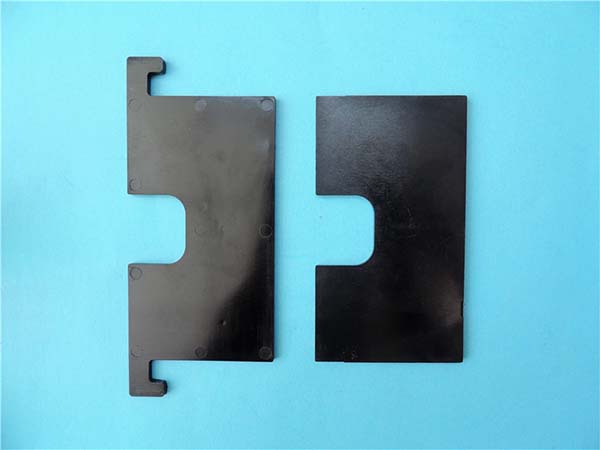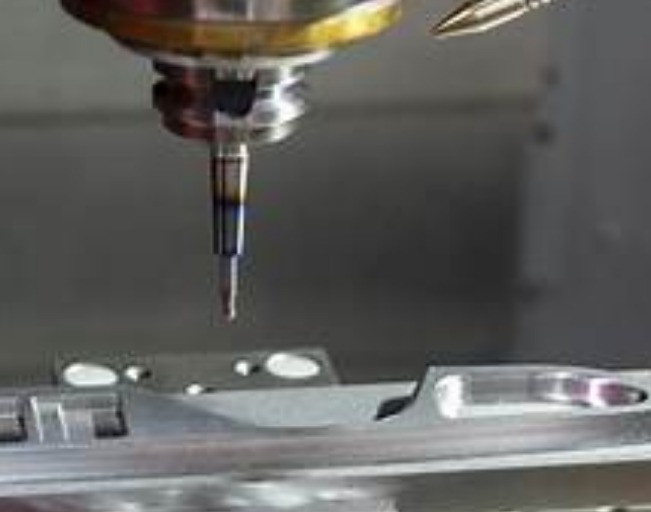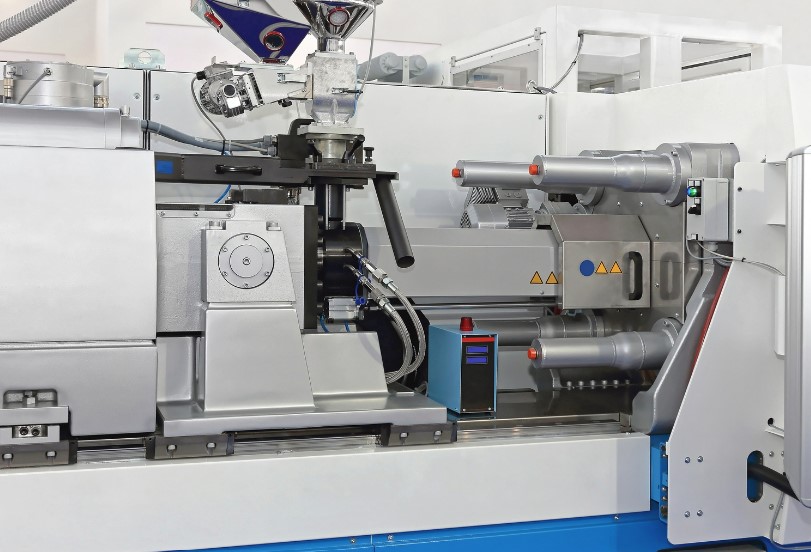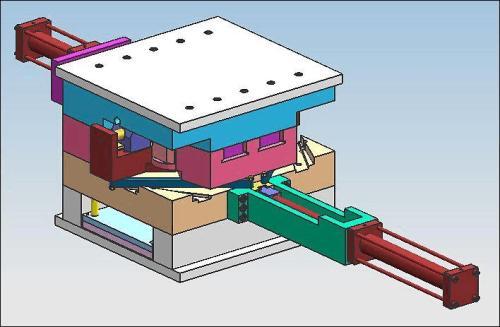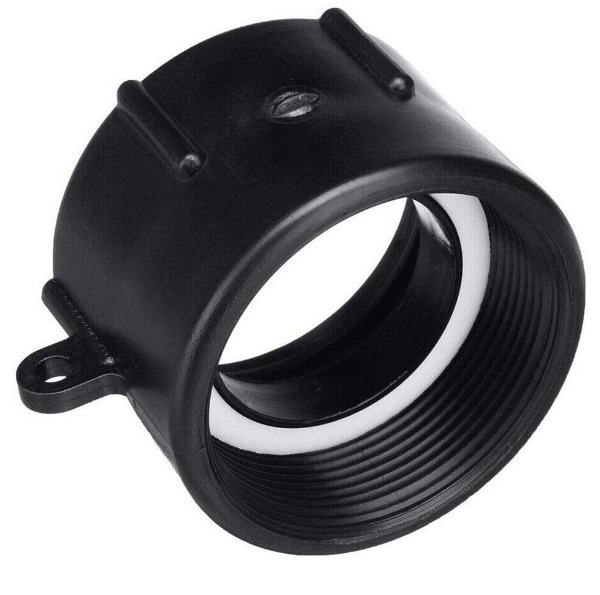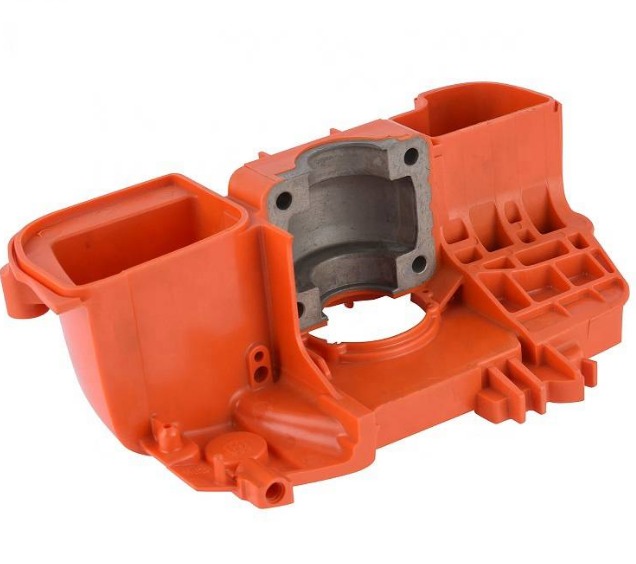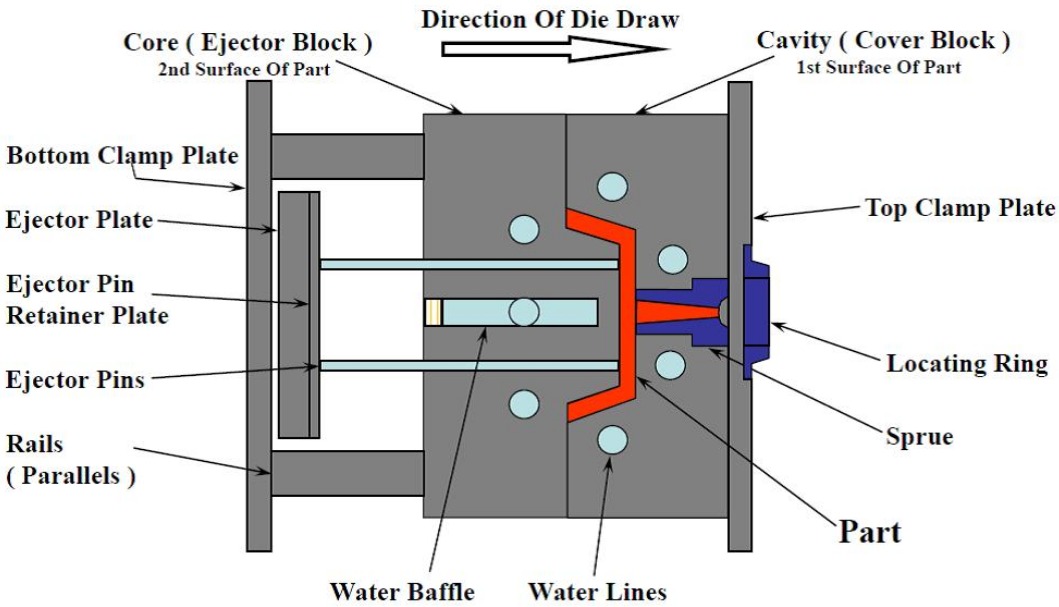What Exactly is Plastic Injection Molding?
Plastic injection molding is a widely used manufacturing process that has revolutionized the production of plastic parts across numerous industries. In simple terms, it involves injecting molten plastic resin into a precisely designed metal mold cavity. Once the plastic fills the cavity, it cools and solidifies, taking on the exact shape of the mold. This process allows for the creation of highly detailed, complex, and accurate plastic components.
The process begins with plastic pellets or granules, which are fed into a heated barrel. Inside the barrel, a screw mechanism rotates, melting the plastic and pushing it forward. Once the plastic reaches the desired molten state, it is forced, under high pressure, through a nozzle and into the closed mold cavity. The mold is typically made of two halves: a stationary half (the cavity) and a movable half (the core). When the plastic cools and hardens, the mold opens, and the newly formed plastic part is ejected.
One of the key advantages of plastic injection molding is its efficiency in mass - production. It can produce a large number of identical parts in a relatively short time. For example, in the production of plastic toys, a single mold can produce hundreds or even thousands of toys per day, depending on the complexity of the toy and the size of the injection - molding machine.
Another advantage is the high level of precision achievable. Modern injection - molding machines and molds can create parts with tight tolerances, often within ±0.001 inches. This makes it suitable for manufacturing parts for industries such as electronics, where precision is crucial. For instance, components for smartphones, like the plastic casings and internal brackets, can be produced with extremely accurate dimensions using plastic injection molding.
The Step - by - Step Process of Plastic Injection Molding
Plastic Material Preparation
The first step in plastic injection molding is the preparation of the plastic material. Usually, plastic comes in the form of pellets or powder. These are carefully loaded into the hopper of the injection - molding machine. Different plastic materials have distinct characteristics, which influence this step. For example, hygroscopic plastics like nylon need to be thoroughly dried before being loaded. If moisture - laden nylon pellets are used, the moisture can turn into steam during the heating process, leading to defects such as voids or blisters in the final product.
Heating and Melting
Once in the hopper, the plastic material is pushed forward by a screw or a plunger into a heated barrel. As it moves through the barrel, the plastic absorbs heat from the heater bands. The temperature required for melting varies depending on the type of plastic. For instance, polyethylene (PE) typically melts in the range of 120 - 200°C, while polycarbonate (PC) requires a higher temperature range of 250 - 300°C. During this stage, the plastic transforms from a solid state to a highly viscous, molten state, ready for injection. The heat is also evenly distributed within the plastic due to the shearing action of the screw, ensuring a uniform melt.
Injection
The molten plastic, now in a fluid - like state, is forced under high pressure through a nozzle and into the closed mold cavity. This high - pressure injection is crucial for filling every intricate detail of the mold. The injection pressure can range from 500 to 2000 bar, depending on factors like the complexity of the mold, the viscosity of the plastic, and the size of the part. Higher pressures are often needed for complex molds with thin - walled sections or long flow paths. If the pressure is too low, the mold may not fill completely, resulting in an incomplete part. On the other hand, if the pressure is too high, it can cause flash (excess plastic around the edges of the mold), warping, or even damage to the mold.
Cooling and Solidification
After the mold cavity is filled with molten plastic, the cooling process begins. The mold is usually connected to a cooling system, often using water or a coolant, which circulates through channels within the mold. As the plastic cools, it solidifies and takes on the shape of the mold. The cooling time is influenced by several factors, such as the thickness of the part, the type of plastic used, and the efficiency of the cooling system. Thicker parts take longer to cool; for example, a 5 - mm thick plastic part may take 30 - 60 seconds to cool, while a 1 - mm thick part could cool in 5 - 10 seconds. Different plastics also have different thermal conductivity, which affects how quickly they release heat and solidify.
Mold Opening and Part Ejection
Once the plastic part has cooled and solidified sufficiently, the mold opens. The two halves of the mold (the cavity and the core) separate, exposing the newly formed plastic part. Ejection pins, which are strategically placed within the mold, then push the part out of the mold cavity. It's important to ensure that the ejection pins are properly designed and positioned. If they are not, the part may be damaged during ejection, or it may not eject cleanly, leading to production delays. The force applied by the ejection pins needs to be evenly distributed to prevent warping or cracking of the part.
Post - processing
The final step in the plastic injection molding process is post - processing. This can involve several operations. Removing flash, which is the excess plastic that has seeped out between the mold halves during injection, is often the first task. This can be done manually using tools like knives or scissors or through mechanical methods such as tumbling. Trimming may also be necessary to remove any sprue (the part of the plastic that filled the injection channel) or other excess material. Additionally, parts may undergo processes like painting, plating, or assembly with other components. Post - processing is essential as it can significantly improve the appearance, functionality, and durability of the final plastic product. For example, a painted plastic part not only looks more appealing but may also be more resistant to environmental factors.
Applications of Plastic Injection Molding
Plastic injection molding is a versatile manufacturing process that finds applications in a wide range of industries. Its ability to produce high - quality, complex plastic parts with precision and efficiency makes it an ideal choice for many product manufacturing needs.
Consumer Electronics
In the consumer electronics industry, plastic injection molding is everywhere. Phone cases are a prime example. They are designed to fit various smartphone models perfectly, providing protection while also adding a touch of style. The injection - molding process allows for the creation of cases with different textures, colors, and even integrated features like kickstands or card holders. Computer accessories such as keyboards, mouse housings, and laptop bezels are also commonly made through plastic injection molding. For instance, the keys on a computer keyboard are individually molded and then assembled, and the smooth, durable housing of a computer mouse is precisely crafted to fit comfortably in the user's hand. These parts need to be not only functional but also aesthetically pleasing, and plastic injection molding meets these requirements with ease.
Automotive Industry
The automotive industry heavily relies on plastic injection molding for numerous components. Dashboard assemblies are complex parts that are made up of multiple plastic components. These dashboards need to be sturdy, heat - resistant, and have a high - quality finish. Injection molding enables the production of dashboards with built - in features like instrument clusters, air vents, and storage compartments. Headlight and taillight housings are another crucial application. These housings need to be precisely molded to ensure proper fitment, light transmission, and protection against the elements. They are often made from high - performance plastics that can withstand the heat generated by the bulbs and the harsh environmental conditions a vehicle may encounter.
Medical Field
In the medical field, plastic injection molding plays a vital role in manufacturing many essential items. Syringes are a common and critical product. They are made from medical - grade plastics that are biocompatible, meaning they do not cause adverse reactions in the human body. The precision of plastic injection molding ensures that the syringes have consistent dimensions, accurate plunger fit, and smooth operation. Medical instrument housings also need to meet strict standards. They must be cleanable, sterilizable, and resistant to chemicals used in medical facilities. For example, the housings for ultrasound machines, blood analyzers, and surgical instruments are carefully designed and molded to protect the internal components while also providing an easy - to - use and hygienic exterior.
Daily Necessities
Our daily lives are filled with plastic injection - molded products. Plastic bottle caps are simple yet essential items. They are mass - produced through injection molding to ensure a tight seal on bottles, preventing leakage. Kitchen utensils like spoons, spatulas, and food containers are made from plastics that are safe for food contact. The injection - molding process allows for the creation of ergonomic designs that are comfortable to hold and use. Toys are another significant application. From small action figures to large play structures, plastic injection molding enables the production of toys with vibrant colors, detailed shapes, and moving parts. These toys are not only fun for children but also need to meet safety standards, and the precision of injection molding helps in achieving this.
Yigu Technology's Perspective
As a non - standard plastic metal products custom supplier, Yigu Technology is well - positioned in the plastic injection molding domain. With years of accumulated experience, we have a deep - seated understanding of the nuances of plastic injection molding. Our team of experts is proficient in handling complex mold designs, whether it's for creating intricate automotive parts or highly precise medical components.
We are equipped with state - of - the - art manufacturing facilities. Our advanced injection - molding machines can achieve high - pressure injection with great accuracy, ensuring that every plastic part we produce meets the tightest tolerances. This not only guarantees the quality of the products but also allows us to handle large - scale production efficiently.
Moreover, we emphasize a customer - centric approach. From the initial design consultation to the final product delivery, we work closely with our clients to understand their unique requirements. We offer comprehensive solutions, including material selection advice, mold design optimization, and post - processing services, to ensure that our clients receive high - quality custom - made plastic products that perfectly fit their needs. Whether it's a small - scale prototype or a large - volume production order, Yigu Technology is committed to providing top - notch service and products in the plastic injection molding field.
FAQ about Plastic Injection Molding
What types of plastics are commonly used in injection molding?
- ABS (Acrylonitrile Butadiene Styrene): A popular thermoplastic polymer. It combines the strength and heat - resistance of acrylonitrile, the toughness of butadiene, and the ease of processing of styrene. ABS has good impact resistance, is easy to machine, and can be easily colored. It is widely used in consumer electronics for making phone cases, computer housings, and in the automotive industry for interior components like dashboards and exterior parts such as bumpers.
- PP (Polypropylene): A semi - crystalline thermoplastic. It is lightweight, has good chemical resistance, and a relatively high melting point (around 160 - 170°C). PP is often used in applications where heat resistance is required, such as in microwave - safe food containers. It is also common in the automotive industry for parts like interior trims and in the production of plastic furniture due to its cost - effectiveness and durability.
- PE (Polyethylene): A widely used plastic with different density forms, including LDPE (Low - Density Polyethylene) and HDPE (High - Density Polyethylene). LDPE is flexible, translucent, and has good impact strength, making it suitable for applications like plastic bags and film wraps. HDPE is more rigid, has higher strength, and is often used for making pipes, bottles, and large containers.
- PC (Polycarbonate): Known for its high - impact resistance, excellent optical properties (high transparency), and heat resistance. PC can withstand high temperatures (usually up to around 130 - 140°C). It is used in the manufacturing of safety glasses, electronic device screens, and automotive headlight lenses.
How can I ensure the quality of injection - molded parts?
- Raw Material Selection: Choose high - quality plastics from reliable suppliers. Check for material certifications and ensure the plastic meets the required specifications in terms of melt flow index, density, and mechanical properties. For example, if making a high - strength automotive part, select a plastic with appropriate tensile strength and impact resistance.
- Mold Design: A well - designed mold is crucial. It should have proper venting to prevent air traps that can cause voids in the part. The gating system should be designed to ensure uniform filling of the mold cavity. Use high - quality mold materials and ensure precise machining to achieve tight tolerances.
- Production Process Control: Monitor and control key process parameters. Keep the injection temperature, pressure, and time consistent. For instance, if the injection pressure is too low, the part may not be fully formed, while too high pressure can cause flash or warping. Regularly maintain and calibrate the injection - molding machine to ensure accurate operation.
- Post - processing: Conduct proper post - processing operations. Remove any flash or excess material carefully. If the part requires finishing like painting or plating, ensure these processes are carried out correctly to enhance the appearance and durability of the part.
What is the approximate cost of setting up a plastic injection molding production line?
The cost of setting up a plastic injection molding production line can vary significantly based on several factors:
- Equipment Cost: This is a major expense. A small - to - medium - sized injection - molding machine (50 - 150 tons) can cost anywhere from \(8,000 to \)50,000. Larger, more advanced machines with higher clamping forces can cost \(100,000 or more. Ancillary equipment like hoppers, dryers, and mold - handling equipment can add another \)10,000 - $30,000.
- Mold Cost: Custom molds can be expensive. A simple mold may cost \(5,000 - \)10,000, while complex, high - precision molds for intricate parts can cost $50,000 or even higher.
- Facility and Utility Costs: Renting or purchasing a suitable production space, along with costs for electricity, water, and ventilation, is also a factor. In a typical industrial area, monthly rent for a 1,000 - square - foot space can range from \(1,000 - \)3,000, and utility costs may add another \(500 - \)1,500 per month.
- Labor Cost: Hiring skilled operators, technicians, and supervisors adds to the cost. In some regions, the annual salary for an injection - molding machine operator can be around \(30,000 - \)50,000, and for a technician, it may be \(50,000 - \)80,000. Overall, setting up a basic plastic injection molding production line can cost between \(50,000 and \)200,000, while a more comprehensive, high - capacity line can cost several hundred thousand dollars or more.
